Being successful in the video game hardware industry has proven to be financial lucrative for many companies throughout the years. Everyone knows about the old school power players like Atari, Nintendo and Sega - they began as a company focusing on this specific market (for the most part). Companies like Sony and Microsoft have also achieved like success in the last decade, though the technological expertise that enabled them to accomplish this were in complimentary field not specifically dedicated to video gaming hardware. These two giants (Sony and Microsoft) are the exception to the rule rather than the norm. Many other highly successful companies have attempted to enter into the video game console field in the past and have had little to no success. The following looks at a few of these mega corporations and provides a little background history, the console they released and what they are currently doing today.
|
|
 |
Believe it or not, the Fairchild Semiconductor company has been around since the 1920s when it was developing aerial photographic equipment and technology for the US government. At first glance, the decision to enter the video game console world is a bit of a surprise. Looking deeper into the history of the company reveals a different perspective. This company employed (and still does) some of the brightest technological minds that were available in the industry. Some of these individuals were at the developmental forefront of CPU technology. Why did they enter the video game console world - because they could. Their expertise in CPU development was solid.
|
| The console they released... | What are they doing today? |
1976 - Fairchild Channel F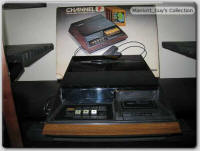
Fairchild Semiconductor beat out RCA in being the first company in the world to release a video game system that utilized programmable ROM cartridges, the Fairchild Channel F. This console was pretty advanced at the time, utilizing the newest CPU technology, the Fairchild F8 CPU. The console ultimately failed due to release of the Atari 2600, but did manage to spawn a second model release as well as achieve moderate success abroad. |
You might have heard of...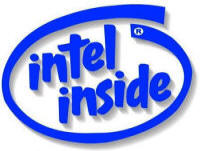
Though not directly related, the inventor of the Fairchild F8 chip that drove the Channel F was Robert Noyce, co-founder of the Fairchild Semiconductor division in 1957 and subsequently the technological powerhouse we know today as Intel (in 1968 with fellow Fairchild alum Gordon Moore). Fairchild Semiconductor is still an active, successful company with over 9000 employees, |
|
 |
Everyone has heard of RCA, but some may not know that Ralph Baer, designer of the Odyssey and the recognized father of the video game console, first approached RCA with this design. RCA obviously turned down the deal and their arch rival Magnavox snatched up this opportunity. Watching the success that Magnavox enjoyed as a result of their missed opportunity, RCA focused its resources to develop an answer. The result was far from what they were hoping for...
|
| The console they released... | What are they doing today? |
1976 - RCA Studio II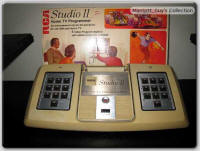
RCA missed the boat again, this time in their attempt to release the first video game system that utilized programmable ROM technology - the Fairchild Channel F beat them to it by a couple of months. In their haste to release this system, RCA released an inferior product with video being displayed in only Black and White and sound being emitted through a single channel buzzer contained within the unit itself. Games were also brutal and this console was laid to rest officially with the release of the Atari 2600.
|
Liquidation Sale...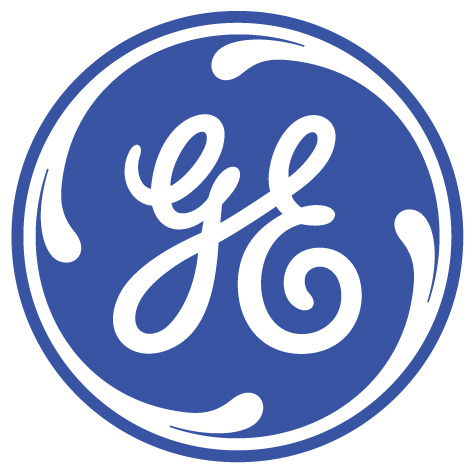
RCA diversified their portfolio during the 1970s with the acquisitions of Hertz, Banquet Foods and Random House amongst others. Included in these new ventures was CED technology - an early form of the in-home movie format/playback - which RCA invested heavily into. This proved to be disastrous with the release of Betamax and VHS systems. These new kids on the block were much more affordable and quickly captured 99% of the market share within two years. RCA lost over $600 million and was eventually purchased by GE, who in turn broke the company apart and sold off the various components. |
|
 |
This highly successful electronics giant was incorporated in 1946. Their initial foray into the field focused on compact calculator technology. They were the first company to release this to the public back in 1975. Their electronics division grew to include the development of keyboards as well as wristwatches. With the video gaming industry booming in the early 1980s, Casio decided to temporarily divert some of their internal resources to developing their own entry...
|
| The console they released... | What are they doing today? |
1983 - Casio PV-1000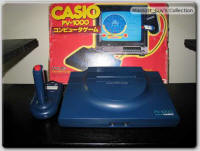
Casio actually released this system prior to their home PC unit, the PV-2000. This is an oddity since most companies entering into the video game foray act in the exact opposite manner - PC first then the console. This console was essentially DOA since the Sega SG-1000 and the Nintendo Famicom hit the market at the same time. This, coupled with the Video Game Crash of 1984, resulted in a quick death for the PV-1000. Casio made another brief appearance in 1995 with the release of the Loopy - a console designed for young girls. This was a commercial failure as well.
|
Still going strong...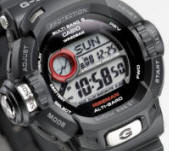
Casio is still an electronics powerhouse and producing innovative technology to this very day. With over 13,000 associates, Casio has expanded their product offerings to include PDAs, musical instruments and digital cameras. |
|
 |
Commodore was one the leading technological forces in the personal home computing market beginning in the late 1970s and lasting well into the 1980s. Developing high powered yet affordable systems was a key to their success. The true star of Commodore at the time was the Commodore 64, still the best selling home computer of all time. The Amiga line of computers followed soon after, featuring extraordinary graphical and gaming capabilities.
|
| The console they released... | What are they doing today? |
1990 - Commodore 64 GS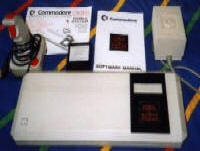
The Commodore 64 GS (Game System) was the consolized version of the popular C 64 personal home computer. This system was only released in Europe and had many issues, primarily outdated technology and lack of 3rd party developmental support. It quickly was an afterthought in the video game industry. Commodore did have two other ventures - the Commodore CDTV and the Amiga CD32. Both had little success success and Commodore never entered the console business again.
|
Can you spare a buck brother...
Commodore officially filed for bankruptcy in 1994. IBM PC compatibles and the Apple Macintosh significantly devoured the market share Commodore once enjoyed during the 1980s. In their last attempt to stem the steadily flowing red ink, Commodore invested heavily into the development of the Amiga CD32. The mild success of this system could not dig them out of the huge financial deficit facing them. The Commodore brand name has passed through a few hands since then, with a new line of computers unveiled in 2007. |
|
 |
Memorex was established in 1961 and primarily focused on disk drives and other computer peripherals for the home computer. Developing state of the art recordable media formats really put them on the map - and directly into the crosshairs of Tandy Corporation. Tandy, who already owned Radio Shack, acquired Memorex in 1982. Tandy had already achieved significant success in the home personal computing market with their TRS line of systems.
|
| The console they released... | What are they doing today? |
1992 - Tandy / Memorex VIS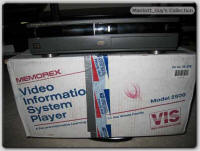
Tandy decided to enter the 'multimedia frenzy' of the early 1990s with their release of the VIS (Visual Information System). The VIS was essentially a stripped down Windows PC in a VCR style casing. Though marketed as a gaming machine in addition to being an educational tool, the fact that so few true games were released for this system quickly sealed this console's fate. Tandy rebranded the machine with the Memorex label to try and increase sales but in the end nothing could help this sad system.
|
Focusing on their power alley...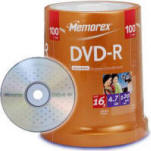
After various mergers and acquisitions, Memorex still lives on to this day. They are primarily focusing on what initially gained them brand recognition - recordable media for personal computers. |
|
 |
Pioneer has been at the forefront of audio/video technology since the early 1950s when it released Hi-Fi speakers and other audio components. In the late 1980s, Pioneer set its sights on Laserdisc technology and bought a majority stake in the format. Though technically superior at the time compared to the popular VHS format, Laserdisc technology had less than a 2% share in the home video market. Pioneer, already heavily invested in this area, asked you to do the same..
|
| The console they released... | What are they doing today? |
1993 - Pioneer LaserActive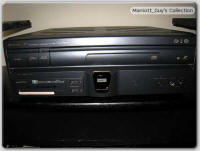
Pioneer's answer to the growing multimedia, all-in-one console market - the infamous LaserActive. At the time, the LaserActive was the closest system to deliver a product that did meet most of the multimedia demands of the consumer - movies, games, karaoke, music, edutainment - all presented in the best audiovideo quality available. The problem - to be able to enjoy all of this would set you back roughly $2,900 in 1993 ($4,500 in today's dollars)!
|
Still in the lead...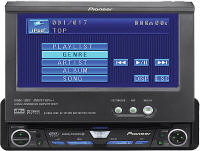
Pioneer is still a leading manufacturer and developer in the fields of car audio, televisions, navigation systems and other consumer electronic components. They employ nearly 38,000 and are a recognized leader in today's market. |
|
| |



